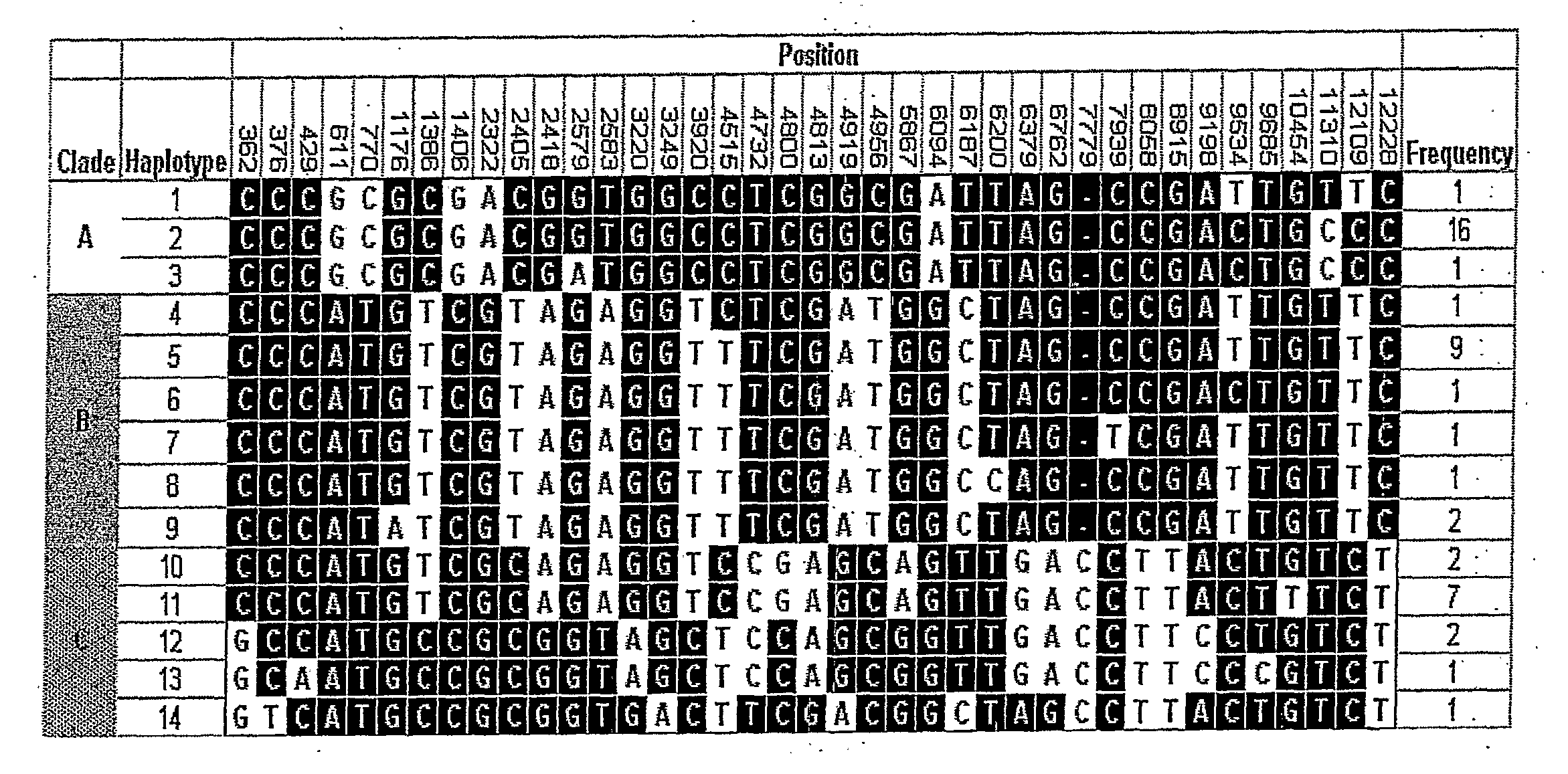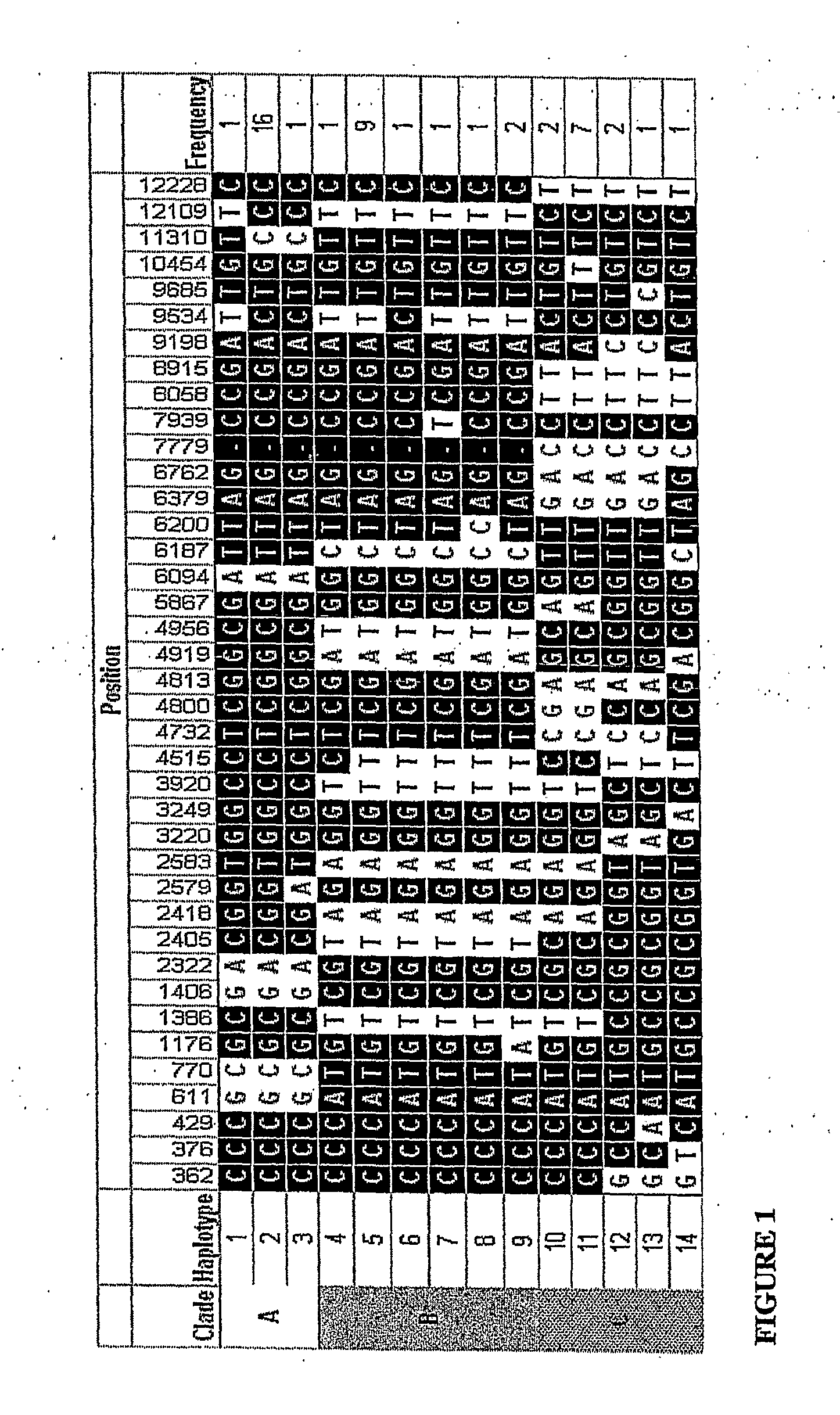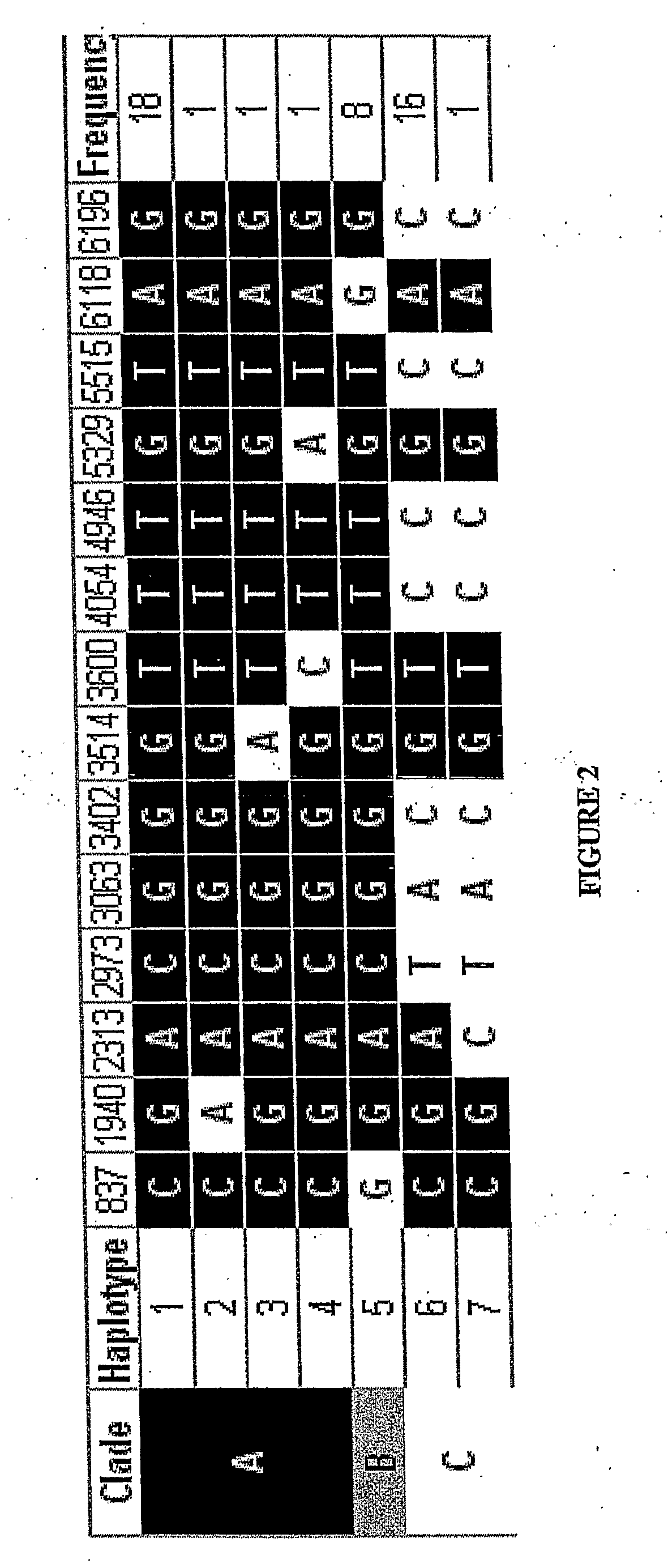Protein C And Endothelial Protein C Receptor Polymorphisms As Indicators Of Subject Outcome
- Summary
- Abstract
- Description
- Claims
- Application Information
AI Technical Summary
Benefits of technology
Problems solved by technology
Method used
Image
Examples
example 1
EPCR Haplotype Analysis
[0283] Inclusion Criteria
[0284] 500 consecutive critically ill subjects admitted to St. Paul's Hospital Intensive Care Unit (ICU) met the inclusion criteria of having at least two out of four SIRS criteria and were included into our study.
[0285] Seven haplotypes of the Endothelial Protein C Receptor (EPCR) gene were inferred using PHASE software as described above and phylogenetic analysis was used to sort these haplotypes into 3 clades. The htSNPs A6118G and T4054C to uniquely identify each haplotype clade (FIG. 2). Of the 500 Caucasian subjects admitted to our ICU with SIRS 498 were successfully genotyped for the A6118G and T4054C polymorphisms and were included in this study. The genotype frequencies of 4054 are shown in Table 3A. These alleles were in Hardy Weinberg equilibrium in our population and there were no significant differences in patient baseline characteristics. FIG. 2 shows 6 additional SNPs of interest (2973, 3063, 3402, 4946, 5515 and 6196...
example 2
Subject Outcome or Prognosis for 4732 Protein C
[0293] Polymorphisms
[0294] Fourteen haplotypes of the Protein C gene were inferred using PHASE software as described above and phylogenetic analysis was used to sort these haplotypes into 3 clades as shown in FIG. 1. FIG. 1 also shows 8 SNPs in LD which identify lade C (4732, 4813, 6379, 6762, 7779, 8058, 8915 and 12228). Additionally, either of SNPs 3220, 9198 in combination with either, 4800 and 5867 are in LD with 4732 and are unique to clade C.
[0295] Table 6 shows the genotype frequencies of T4732C. These alleles were in Hardy Weinberg equilibrium in our population.
TABLE 6Genotype frequencies of ProC haplotype tag SNP T4732CGenotype FrequenciesAllele FrequenciesTTCTCCTCp*T4732C57%37%6%76%24%0.99
*Chi-Squared test for Hardy-Weinberg equilibrium
[0296] It was found that SNP haplotypes of protein C 4732 are associated with altered survival and organ dysfunction in critically ill adults who have systemic inflammatory response syndro...
example 3
Combination of EPCR and Protein C Polymorphisms
[0313] An interaction of novel haplotypes of protein C (protein C 4732 C) and EPCR(EPCR 4054 T) is associated with decreased survival and increased organ dysfunction in sirs, sepsis and septic shock
[0314] Subjects who had no copies of the EPCR risk allele (4054T) and no copies of the protein C risk allele (4732C) had the best 28 day survival and the least severity of organ dysfunction (protective-protective). Furthermore, subjects who had at least one copy of the EPCR risk allele (4054T) and at least one copy of the protein C risk allele (4732C) had the lowest survival and the greatest organ dysfunction (risk-risk). Finally, subjects who had either no copies of the EPCR risk allele (4054T) and at least one copy of the protein C risk allele (4732C) or who had at least one copy of the EPC-R risk allele (4054T) and no copies of the protein C risk allele (4732C) had intermediate survival and organ dysfunction. These findings are interesti...
PUM
| Property | Measurement | Unit |
|---|---|---|
| Magnetic field | aaaaa | aaaaa |
| Magnetic field | aaaaa | aaaaa |
| Magnetic field | aaaaa | aaaaa |
Abstract
Description
Claims
Application Information
 Login to View More
Login to View More - R&D
- Intellectual Property
- Life Sciences
- Materials
- Tech Scout
- Unparalleled Data Quality
- Higher Quality Content
- 60% Fewer Hallucinations
Browse by: Latest US Patents, China's latest patents, Technical Efficacy Thesaurus, Application Domain, Technology Topic, Popular Technical Reports.
© 2025 PatSnap. All rights reserved.Legal|Privacy policy|Modern Slavery Act Transparency Statement|Sitemap|About US| Contact US: help@patsnap.com



